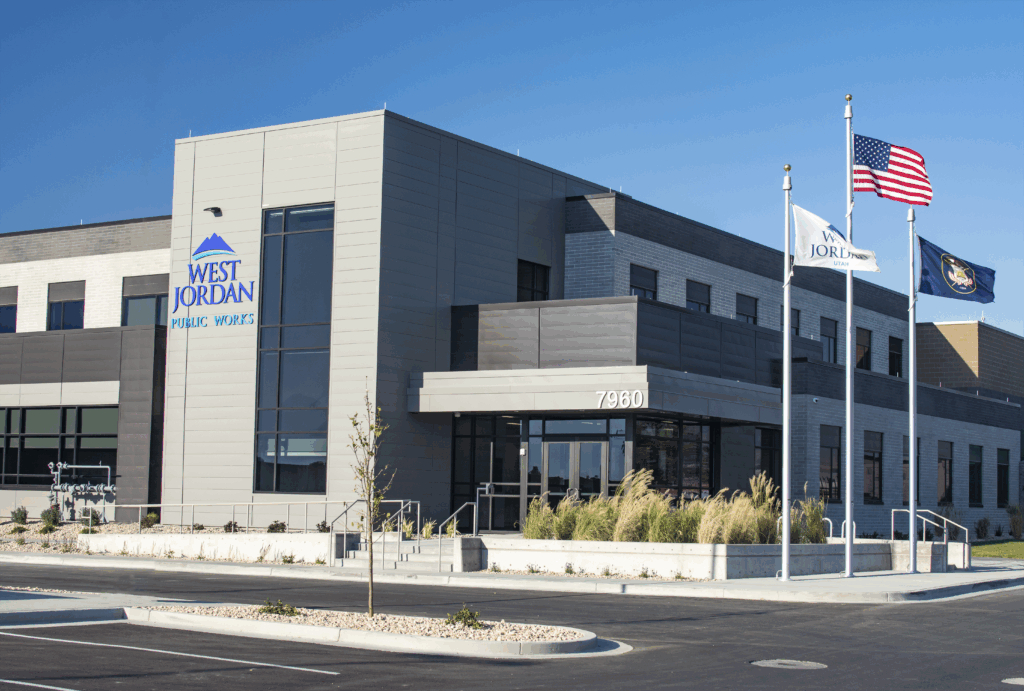A World Without Public Works: Roads Collapse and Trash Abounds

What is Public Works?
Public Works is the backbone of the city. They maintain 870 lane-miles (every lane is counted separately– if a road is one mile long and has three lanes, it counts as three lane-miles). They manage over 84,000 garbage, recycling and seasonal cans. They care for over 500 vehicles, from police cars to ambulances, fire trucks to lawn mowers.
Brian Clegg, a West Jordan employee since 1990 and Public Works Director since 2018, describes the West Jordan Public Works Department as “one of the best in the state.” Clegg recognizes the hard work of his employees. “Our employees take pride in their work,” he said. “They’re here to be public servants.”
What would it look like if Public Works disappeared today?
- Our yards would be buried under mountains of trash.
- Roads would slowly disintegrate—cracks and potholes that would make car travel hazardous.
- A snowstorm would keep us all home—No plows, no salt.
- We wouldn’t know where all the utility pipes are under the streets, how old they are, or when they need replacing. This means a lot of broken water and sewer lines.
- Police officers would be rushing to you…on foot-–with no roads or cars..
- Graffiti would become a permanent feature.
The Five Divisions of Public Works:
Streets, Engineering, GIS (Geographic Information Systems), Fleet and Solid Waste.
What does Streets do?
The Streets Division monitors every inch of road. There are many strategies to extend a road’s lifespan, from sealing cracks, applying an overlay coat to reduce UV damage, to milling off and replacing the top layer. Streets also manage snow removal. Crews apply brine before a storm to prevent snow and ice sticking to the road, as well as activate the road salt more quickly. Snow plows are active on a rotating 12-hour schedule and continue until the snow is cleared.
Streets also has an in-house sign shop where many of the West Jordan street signs are made!
What does Engineering do?
Engineering keeps a detailed map and plan for everything transportation. They determine the road width, sloping, street line patterns, and even the chemistry of the road materials–whatever it takes to ensure safety, efficiency and longevity. Every 5 to 7 years they update their plan based on the growth and needs of the city. Engineers work closely with developers, consultants, and other city departments to support well-planned projects.
What does GIS (Geographic Information Systems) do? GIS records data and maps out everything. Their records help almost every city department to make more informed and accurate decisions for day-to-day operations, and for the future.
We make maps for:
- Age and materials of sidewalks, streets and water pipes.
- Earthquake fault lines.
- When, where and what types of crimes are committed.
- Live trackers for snow plows and street sweepers.
- Streetlights, garbage-day routes, voting districts, zoning, trees, rivers, and more.
What does Fleet do? Fleet takes care of 516 pieces of rolling stock, from police cars to fire engines and lawn mowers. They also care for 418 pieces of equipment. An in-house auto shop keeps everything running smoothly. If it’s out of service, it’s not on the street caring for the public.
What does Solid Waste do? ACE is our partner for waste collection, but Solid Waste manages the contract, and oversees collection to make sure it is handled efficiently. They manage over 84,000 seasonal, garbage and recycling cans for our residents, including replacement and repairs.
Common misconceptions:
- Public Works can repair power lines
- Rocky Mountain Power is responsible for the power in our city. Any issues due to power, from outages, downed lines, or broken poles are managed by Rocky Mountain Power.
- All the roads in West Jordan are maintained by the City
- Some roads are private and managed by private companies. Some of the major roads, like U-111 or Redwood Road, are managed and maintained by Utah Division of Transportation (UDOT).
- There are too many construction workers at a job site. They stand around and waste time and money.
- A quick glance often doesn’t tell the whole story. Many construction crews work on irregular schedules or in phases that require different workers to be active at different times. Some workers have highly specialized roles that are only needed at certain points in the process. What might appear as inactivity is often a necessary part of the workflow—waiting for concrete to cure, equipment to arrive, or for the site to be cleared for the next task. In other cases, standing by is part of a safety protocol, ensuring that work is done without endangering team members. City employees and contractors are committed to completing projects as efficiently, safely, and responsibly as possible.
We appreciate the public’s patience and understanding as we work to improve infrastructure and services for everyone in the community.
If you have any questions or need help with something in your neighborhood, don’t hesitate to contact Public Works!
Office Hours: Monday-Friday (excluding all state and federal holidays), 8 a.m. – 5 p.m.
Phone: 801-569-5700
Email: public.works@westjordan.utah.gov.


